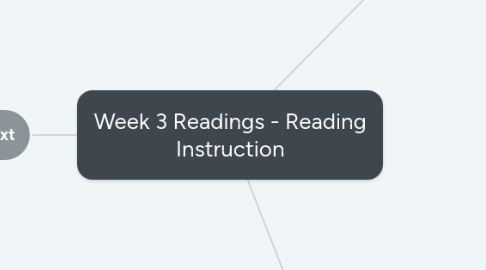
1. Comprehension Strategies
1.1. Strategies from the text
1.1.1. Teaching Useful Linguistic Structures
1.1.1.1. Assisting students in understanding linguistic structures to help with different text structures: classify, sequence, compare/contrast, cause and effect, making connections, predicting, visualizing
1.1.2. Developing Elaborate Responses
1.1.3. Preteaching
1.1.3.1. front loading
1.1.4. Direct Explanation
1.1.5. Scaffold Learning
1.1.5.1. Beginning level, intermediate level, advanced level
1.1.6. Modeling and Thinking Aloud
1.1.6.1. Anchor Charts, Visuals, chart displaying the strategy
1.1.7. Using Instructional Routines
1.1.7.1. Strategies/routines before, during, and after reading
1.1.8. Organizing Materials to Support Concept and vocabulary Development
1.2. Using strategy starters
1.3. Using Strategy cards
1.4. Keys to Comprehension:
1.4.1. Providing enough time for independent, self-selected reading
1.4.2. Explicitly teaching strategies
1.4.3. determining Importance
1.4.3.1. "What is the most important part(s) of this story?"
1.4.4. inferring and predicting
1.4.4.1. "What do you think is going to happen next? And why?"
1.4.5. Asking Questions
1.4.5.1. "Ask & Better Understand"
1.4.6. Making Connections
1.4.6.1. "Using what you know to better understand the story"
1.4.7. Visualizing
1.4.7.1. "Look at the movie in your head."
1.4.8. Synthesizing
1.4.8.1. "What you know + What you learned = New Understanding
2. Vocabulary Growth
2.1. Context Activities
2.1.1. learn vocabulary in context: define words using context clues or real life situations
2.2. Deep- Processing Activities
2.2.1. Using questions to promote thinking
2.2.1.1. asking questions using the vocabulary words - get them to use the vocabulary in context
2.3. Cognate Activités
2.3.1. Using words that are similar in home language and L2
2.3.1.1. Careful of false cognates
2.3.1.2. get students to help you find them and teach the class
2.4. Structural analysis activities
2.4.1. helping students figure out the parts of the word and what the parts mean
2.4.1.1. Prefix
2.4.1.2. Suffix
2.4.1.3. root words
2.4.1.3.1. Careful of "false" root words (EX "Moth" in "Mother"
3. Expository Text
3.1. Students' success in school is tied to their ability to understand expository text
3.2. Graphic organizers are prewriting looks - not a finished piece of writing!
3.3. Reading A-Z expository passages are considered to be more difficult than narrative pieces - based on running record data. Student could perform higher on a narrative than expository on the same level.
3.4. Common Text Structures
3.4.1. Description
3.4.2. Sequential
3.4.3. Compare / Contrast
3.4.4. Cause / Effect
3.4.5. Problem / Solution
3.5. Helpful to better understand / Comprehend expository texts
3.5.1. Shared Reading
3.5.2. read aloud
3.5.3. Writing about what you're reading:
3.5.3.1. Graphic organizers (Prewriting tool)
3.5.3.2. Sentence Frames
3.5.3.3. Text Structure Frame

